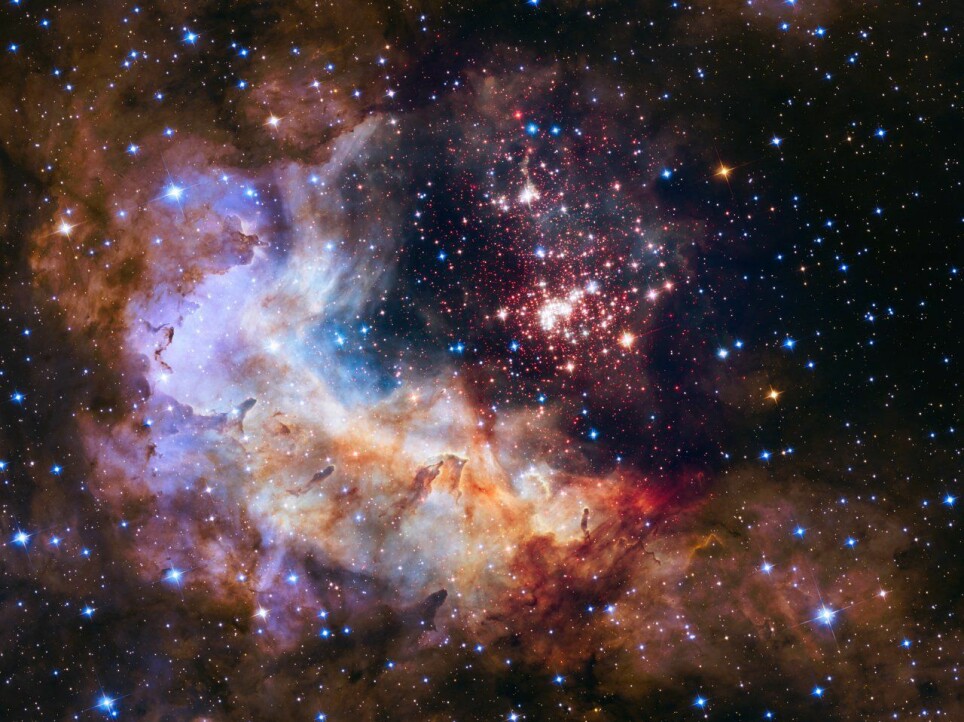
Five myths about the Big Bang
Where did the Big Bang happen, and what was going on around it? Two physicists take us through the most common misunderstandings of what the theory is about.
The whole universe was packed together in an infinitely small point, then it exploded, and the entire mass that made up the universe was sent out into space.
An astrophysicist would tell you that everything about that statement is wrong.
“That’s not at all how we should think about the Big Bang,” says Torsten Bringmann.
Bringmann is a professor and works with cosmology and astroparticle physics at the University of Oslo (UiO).
Are Raklev, a professor of theoretical physics at UiO, has noticed that a lot of descriptions give a misleading picture of what the Big Bang theory actually states.
Raklev and Bringmann take us through the most common misunderstandings.
Warm and dense
First of all, what does “Big Bang” really mean?
‘The Big Bang theory is that about 14 billion years ago the universe was in a state that was much warmer and much denser, and that it expanded. That's it, it's not much more than that,” says Raklev.
Since then space has continued to expand and has become colder.

Based on the theory, scientists have gained a clearer overview of the history of the universe, such as when elementary particles were formed and when atoms, stars and galaxies formed.
They have a good idea of what happened back when the universe was about 10^-32 seconds old. That’s 0.0000000000000000000000000000000001 seconds, according to an article written by astrophysicist Jostein Riiser Kristiansen.
Now on to the myths.
1. "It was an explosion."
The Big Bang phrase itself makes it sound like it was an explosion, says Are Raklev. But that isn’t actually that accurate a description. You’ll find out why soon.
In the early 1920s, mathematician Alexander Friedmann discovered that Einstein's general theory of relativity provides for an expanding universe. The Belgian priest Georges Lemaître came to the same conclusion.
Shortly afterwards, Edwin Hubble showed that galaxies are actually moving apart.
The galaxies are moving away from us. The light from them is red-shifted, meaning the waves have become longer and shifted towards the red end of the light spectrum. Not only that, galaxies are disappearing from us faster and faster.
Someday, almost all the galaxies we can currently observe in telescopes will be out of view. Eventually the stars will go out and observers will look out into an eternally dark and lonely sky.
Fortunately, that’s an extremely long way off.
We can also play the story the opposite way. The galaxies are moving apart and they have been closer before.
“If you take the entire observable universe and rewind all the way back, everything fit into a very, very small area,” Raklev says.
Then we come to the point in time of the Big Bang. What happened?
It's easy to think that the Big Bang was an explosion, in which substances were thrown out, like pieces of wood flying off after a hand grenade goes off.
“But when it comes to the Big Bang, it’s not the substance that travels out,” says Raklev.
“The universe itself expands, space itself expands.”
An explosion where the mass explodes in all directions is not an accurate picture of the Big Bang.
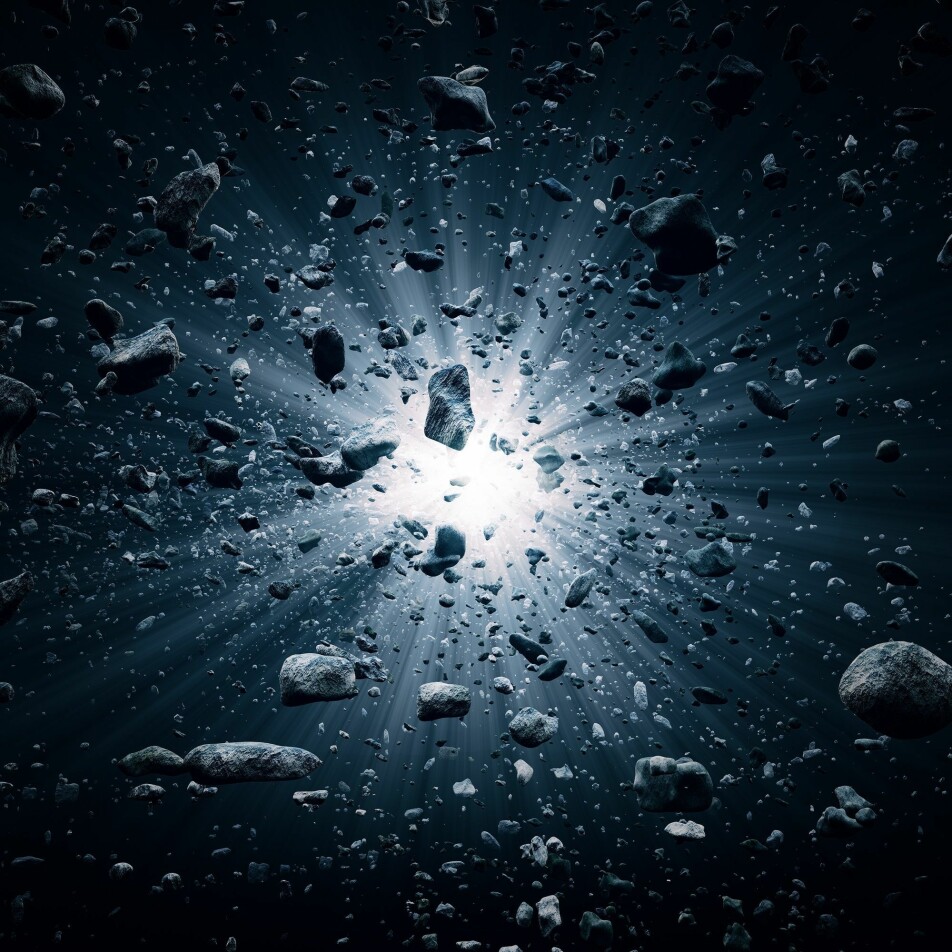
2. "The universe is expanding into something."
So it isn’t the galaxies that are moving apart, but space that’s expanding.
We can think of it as a ball of dough with raisins. The dough represents space and the raisins are the galaxies. Set the dough to rise, and the raisins will end up further apart, without actually having moved.
Bringmann uses the surface of a balloon as an example. Draw dots on the uninflated balloon and see how the distance between points increases as it inflates.
“At the same time, it’s true that galaxies also move due to mutual gravitational attraction – that’s an additional effect,” says Raklev.
A few galaxies are blue-shifting, meaning they’re moving towards us. This applies to some nearby galaxies. But over large distances, this effect is eclipsed by Hubble-Lemaître's law, which states how fast galaxies are moving away in proportion to distance. In fact, the distance increases faster than light between points that are extremely far apart.
A ball of dough in the oven expands within the existing space inside the oven. What about the universe? What's outside?
The universe doesn’t expand into anything. Scientists don’t believe that the universe has an edge.
That which we call the observable universe is a bubble surrounding us that is 93 billion light-years in diameter. The more distant something is that we look at, the farther back in time we’re seeing. We can’t observe or measure anything farther away than the distance light has managed to travel towards us since the Big Bang.
Since the universe has been expanding, the observable universe is counterintuitively larger than 14 billion light-years.

But scientists calculate that the universe outside our bubble is much, much larger than that, perhaps infinite.
The universe can be "flat," it appears. That would mean that two light rays would remain parallel and never meet. If you tried to travel to the end of the universe, you would never reach it. The universe goes on infinitely.
If the universe has positive curvature, it could in theory be finite. But then it would be like a kind of strange sphere. If you travelled to the "end" you would end up in the same place you started, no matter which direction you took. It's a bit like being able to travel around the world and ending up back where you started.
In either case, the universe can expand without having to expand into anything.
An infinite universe that’s getting bigger is still infinite. A "spherical universe" has no edge.
3. "The Big Bang had a centre."
If we imagine the Big Bang as an explosion, it’s easy to think that it exploded outwards, from a centre. That’s how explosions work.
But that wasn’t the case with the Big Bang. Almost all galaxies are moving away from us, in all directions. It seems like the Earth was the centre of the beginning of the universe. But it wasn’t.
All other observers would see the same thing from their home galaxy, Bringmann explains.
The universe is expanding everywhere at the same time. The Big Bang didn’t happen in any particular place.
“It happened everywhere,” says Raklev.
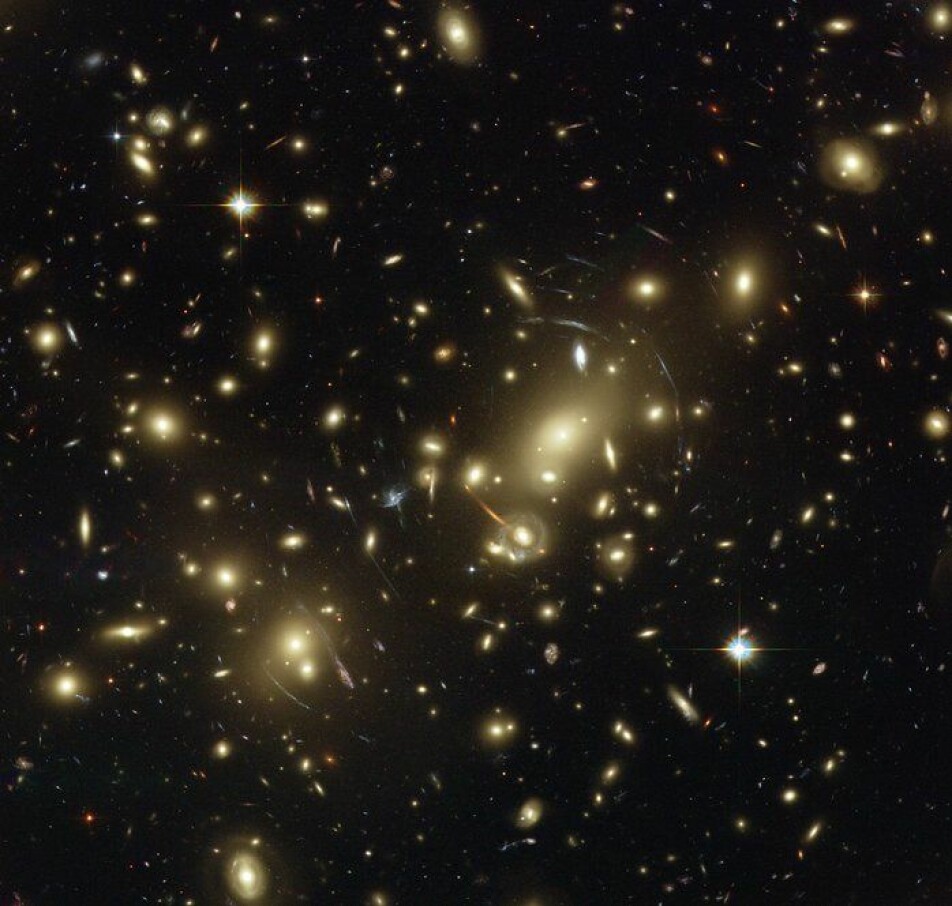
4. "The whole universe was gathered in a tiny little point."
It’s true that our entire observable universe was gathered incredibly tightly together in very little space at the beginning of the Big Bang.
But how can the universe be infinite, and at the same time have been so small?
You might read that the universe was smaller than an atom at first and then the size of a football. But that analogy insinuates that space had boundaries in the beginning, and an edge.
“There’s nothing that says that the universe wasn’t already infinite at the Big Bang,” says Raklev.
“It was just smaller in the sense that what was then a metre, has now expanded into enormous distances of many billions of light years.”
When you talk about how big the universe was at certain times, it refers to our observable universe.
“The whole observable universe comes from a tiny little area that you can call a point. But the point next to it has also expanded, and the next point as well. It's just that it’s so far away from us that we can’t observe it,” says Raklev.
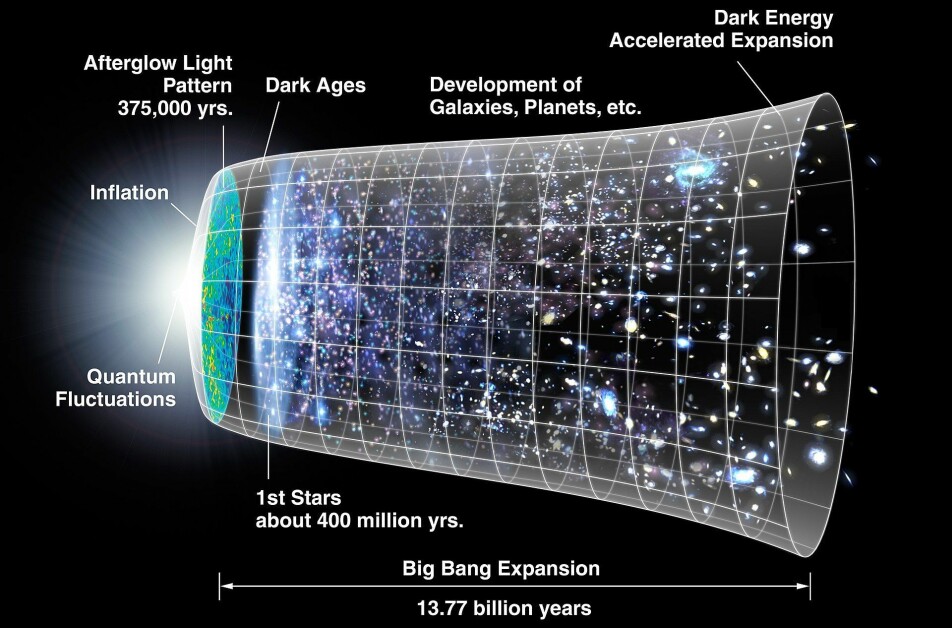
5. "The universe was infinitely small, hot and dense."
Maybe you’ve heard that the universe began as a singularity. Or that it was infinitely small, hot and so on. That might be true, but a lot of physicists don’t think it’s a correct understanding.
Singularities are an expression for mathematics that breaks down and can’t be described with ordinary physics, according to cosmologist Steen H. Hansen.
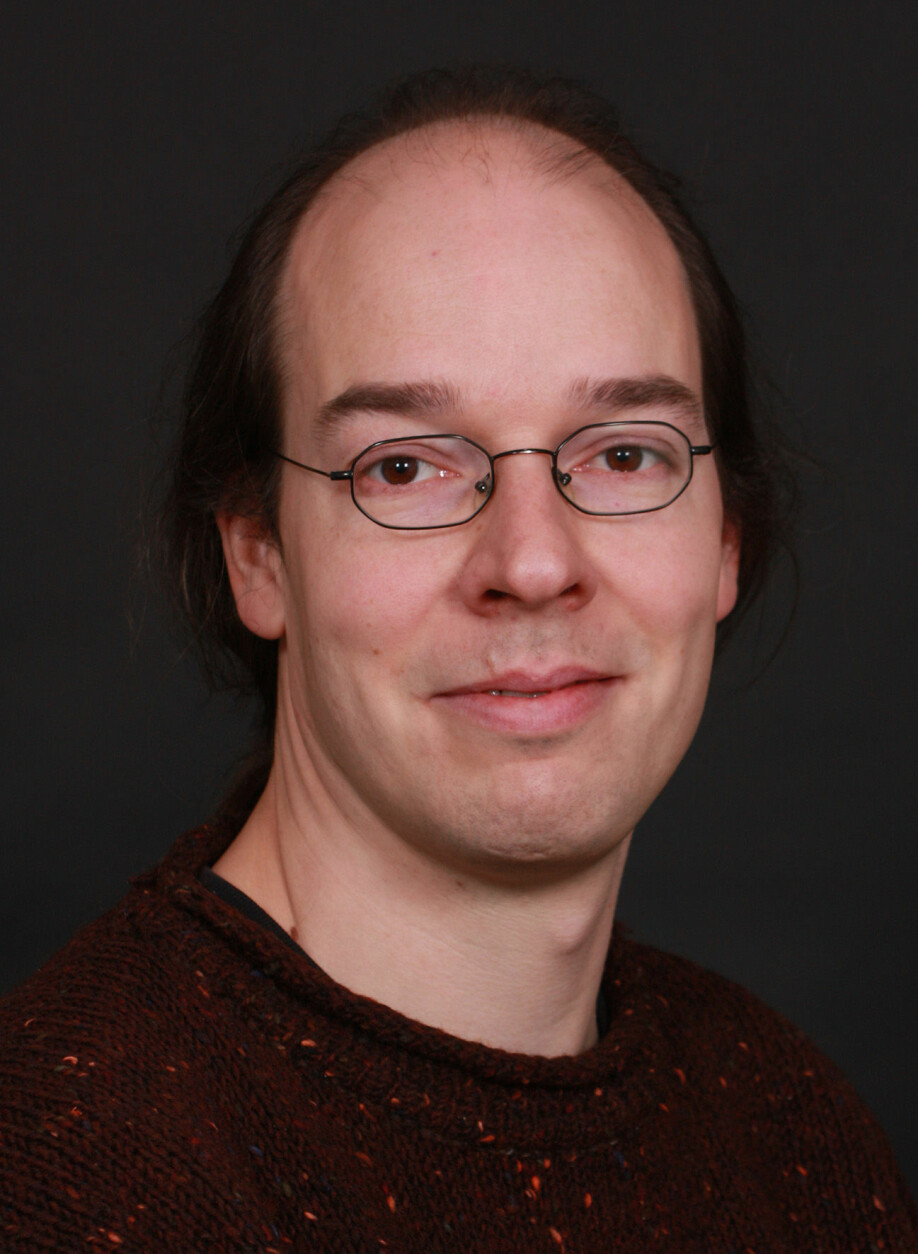
Bringmann sums up what this all means when it comes to the Big Bang.
“The universe today is a little bigger than it was yesterday. And it's even a little bigger still than it was a million years ago. The Big Bang theory involves extrapolating this back in time. Then you need a theory for that: and that’s the general theory of relativity.”
“If I extrapolate all the way back, the universe gets smaller and smaller, it gets denser and denser, and warmer and warmer. Finally you get to a point where it’s really small, really hot and dense. That’s actually the Big Bang theory: that the universe started in such a condition. That’s where you really have to stop,” says Bringmann.
If you run the general relativity theory all the way back you reach a point of infinitely high density and heat, where the size is zero.
“That’s pure mathematical extrapolation beyond what the theory actually allows,” Bringmann says.
“You then come to a point where the energy density and temperatures are so high that we no longer have physical theories to describe them.”
He says that physicists need a different theory. And there are people who are researching just that.
“What do we need in order to describe such an extreme condition? That’s where we enter an area where you need a theory that combines gravity and quantum theory. No one has been able to formulate it yet. The expectation is precisely that a quantum gravity theory wouldn’t lead to the conclusion that everything goes back to one point,” Bringmann says.
So what happened at this time, the earliest point in the history of the universe, is still hidden from us, at least so far.
Translated by: Ingrid Nuse
Read the Norwegian version of this article on forskning.no.
































